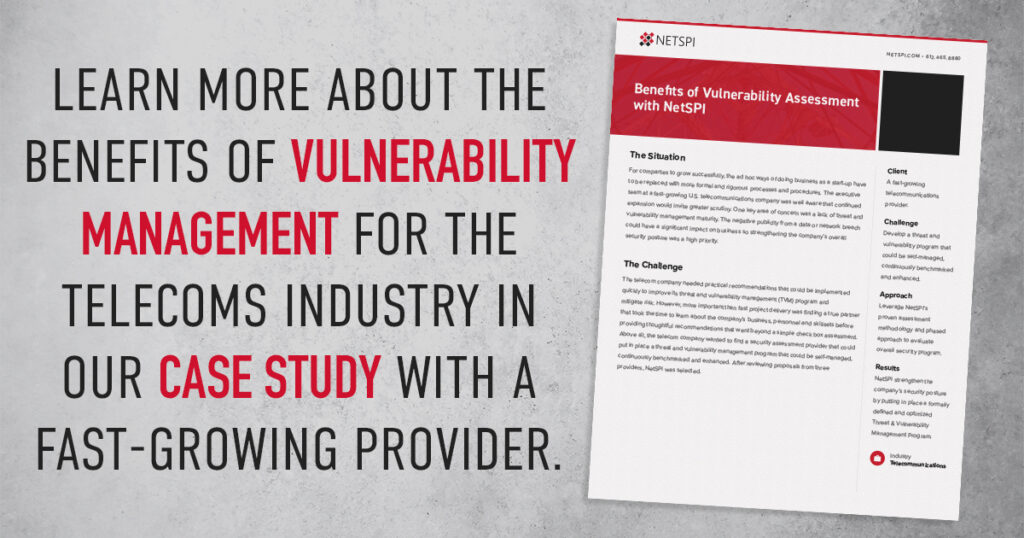Why the Telecoms Industry Should Retire Outdated Security Protocols
The Federal Communications Commission (FCC) recently announced its proposal to update data breach laws for telecom carriers.
A key change in the proposal? Eliminating the seven-business-day waiting period required of businesses before notifying customers of a breach.
Although the proposed FCC change would allow companies to address and mitigate breaches more quickly, it does not solve the greater issue at hand: The sensitive data collected by the telecoms industry is constantly at risk of being exploited by malicious actors.
The Telecoms Threat Environment
Protecting data within the telecoms industry is instrumental in ensuring customer privacy and safety.
When telecom companies experience a data breach, hackers often target customer proprietary network information (CPNI) – “some of the most sensitive personal information that carriers and providers have about their customers,” according to the FCC. This includes call logs, billing account information, as well as the customer’s name, phone number, and more.
In August 2021, T-Mobile suffered the largest carrier breach on record, with over 50 million current and former customers affected.
To protect customers from further breaches, the telecoms industry must deploy configurations securely, enable end-to-end encryption, and return to security basics by enabling automation in vulnerability discovery and penetration testing.
Misconfiguration Risk
Networks, specifically telecommunications channels, continue to increase in complexity, causing an increased risk for misconfigured interfaces within organizations.
From these misconfigurations, attackers can stitch together multiple weaknesses and pivot from one system to another across multiple organizations.
In October 2021, LightBasin, a hacking group with ties to China, compromised telecom companies around the world. LightBasin used multiple tools and malware to exploit weaknesses in systems that were configured with overly permissive settings and neglected to follow the principle of least privilege.
These hacking tactics are not unique. Had the telecoms industry instituted the proper channels for alerting and blocking on common attack patterns and known tactics, techniques, and procedures (TTPs) that attackers use widely they may have been able to prevent the LightBasin attack.
Additionally, to protect against future attacks and data breaches, industries should build proper standards and automation to ensure that configurations are deployed securely and consistently monitored.
The Need for End-to-End Encryption
Enabling end-to-end encryption within mobile communication networks could help to combat some of the lateral movement strategies used by LightBasin and similar hacker groups.
This lateral movement within telecommunications networks can be challenging for the industry to address for multiple reasons. The overarching issue? Telecommunications systems were not originally developed with security in mind and are not secure by design.
The telecoms systems have flaws that cannot be fixed without major architectural changes and these systems have evolved to be utilized in a way that’s outside of the original creators’ intent.
In particular, these mobile communications networks were not built with a quality of service guarantee or any type of end-to-end encryption to ensure that users’ data is not exposed while in transit.
WhatsApp, for example, uses the Signal protocol to asymmetrically encrypt messages between users. The encrypted messages then get transmitted the via a WhatsApp facilitated server.
This ensures that only the intended recipient can decrypt the message and others who attempt to do so will fail. Legacy telecoms players should adopt a similar approach for added protection to users’ communications.
While end-to-end encryption can protect against lateral movement strategies, this does not mean the security is infallible. Just because the communication channel is secure doesn’t ensure application security. Users are still vulnerable to social engineering attacks, malware, and, as in WhatsApp’s case, the app itself may be vulnerable.
To truly secure user data, the telecoms industry security must invest in holistic security strategies including application security testing.
For more on end-to-end encryption, read Why Do People Confuse “End-to-End Encryption” with “Security”?
Collaboration and Coordination
As the telecoms industry begins to prioritize security, organizations harnessing the networks must also prioritize security.
This includes ensuring multi-factor authentication between users and systems, the principle of least privilege, or even proper input validation and output encoding.
In tandem, the telecoms industry should strive to build automated vulnerability management processes where possible. This ensure continuous checks and balances are in place to secure all deployed systems – both at the software and infrastructure levels.
Where hackers have only become more sophisticated in the technology and methods used to acquire data, the telecoms industry has neglected to keep up.
Currently, messages and calls can be spoofed, data is not encrypted while in transit, and the quality of service and protection is not guaranteed. We have adopted a network with inherent flaws in its design from a security perspective, and these systems are used by billions of people across the globe.
The change in FCC guidelines mark significant progress. Given the current threat environment, security efforts in the telecoms industry must be prioritized to ensure billions of people and their data are protected.





